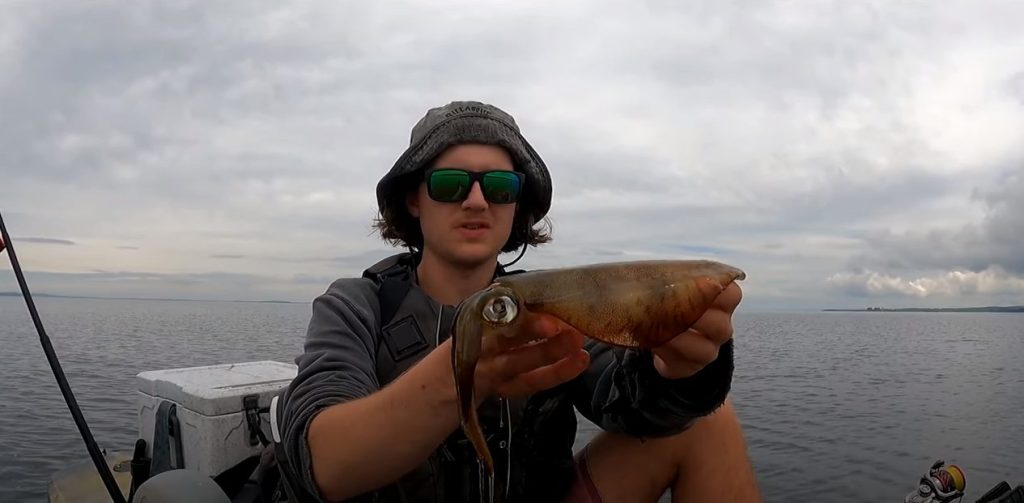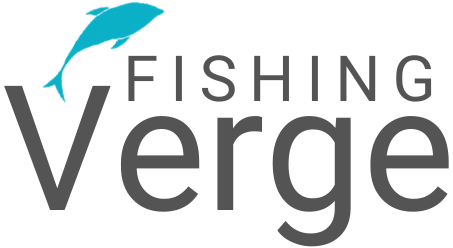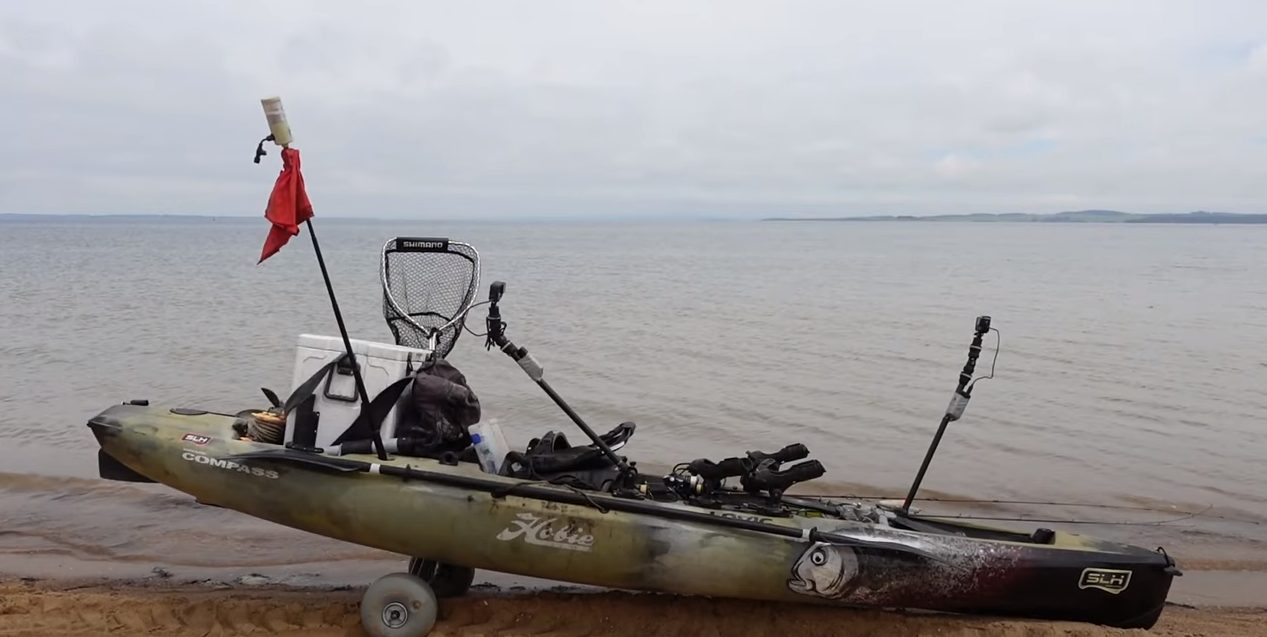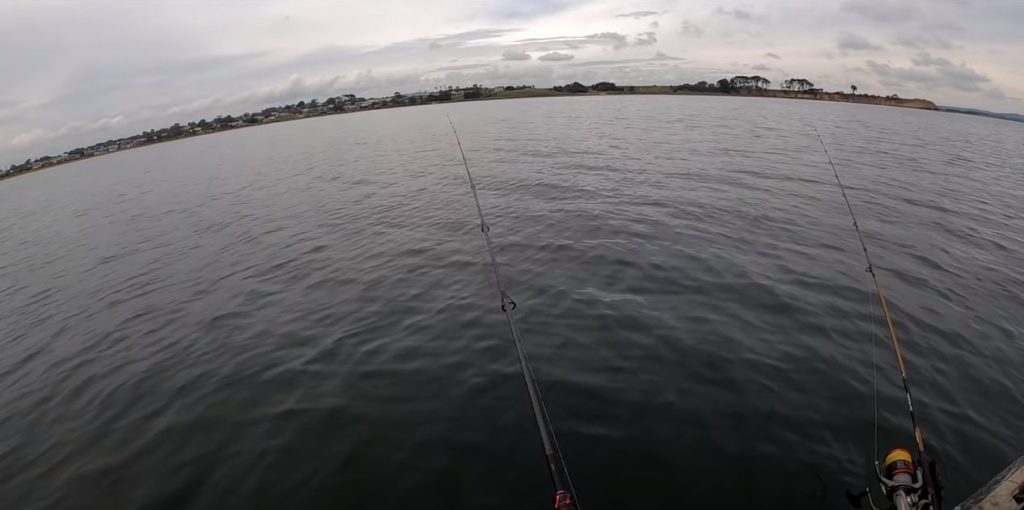I. Getting started
Kayak fishing in fresh water is a popular and fun way to get out into nature and catch fish. Kayak fishing is a different way to fish than from a boat or the shore. It gives anglers access to places that might be hard to get to otherwise.
A. A description of kayak fishing in fresh water
Kayak fishing is a way to fish in freshwater bodies of water where you use a kayak to get to fishing spots. Anglers use many different ways to fish from a kayak, such as trolling, casting, and fly fishing. Kayaks are a great way to go fishing because they are light, easy to move around, and can be launched from almost anywhere.
B. Benefits of kayak fishing in fresh water
Kayak fishing in fresh water has a lot of benefits for anglers. One of the best things about it is that you can get to fishing spots that are hard to get to any other way. Kayaks can be used to fish in places where bigger boats can’t go, like shallow water, narrow streams, and small ponds. Kayak fishing is also a great way to get some exercise and enjoy the outdoors.
C. Why it’s important to know the most important tips for kayak fishing in fresh water
Kayak fishing in fresh water can be a fun and exciting activity, but it’s important to know the basics to stay safe and catch fish. Your kayak fishing experience will be much better if you know how to choose the right kayak, use the right gear, and stay safe on the water. If you know the most important tips for kayak fishing in fresh water, you can have a better time and catch more fish.
Tip No. 1: Pick the right kayak

Choosing the right kayak is the first step in kayak fishing in fresh water. Here are some things to think about when choosing a kayak, the kinds of kayaks that are good for fishing in fresh water, and why a fishing kayak is better than a regular kayak.
A. Things to think about when buying a kayak
There are a few things to think about when choosing a kayak for fishing in fresh water. These include how big and heavy the kayak is, how much storage space it has, and what kind of water you will be fishing in. You should also think about how stable, easy to move, and fast the kayak is.
B. Types of kayaks that can be used for fishing in fresh water
There are different kinds of kayaks that can be used for fishing in fresh water. There are fishing kayaks, kayaks for touring, and kayaks for fun. Recreational kayaks are usually the cheapest and are made for paddling around on the water for fun. Touring kayaks are made for longer trips and are easier to turn than recreational kayaks. Fishing kayaks are made for fishing and have features like rod holders, places to store fishing gear, and comfortable seats.
C. Advantages of a fishing kayak over a regular kayak
Fishing kayaks have several advantages over regular kayaks. They are made with things like rod holders and places to put tackle and other fishing gear that make them better for fishing. Most fishing kayaks are also more stable than regular kayaks, which makes them better for fishing in rough water or when the water is moving. Lastly, fishing kayaks are often more comfortable to sit in for long periods, which is important when spending a day on the water.
III. Tip No. 2: Safety First
Kayaking and fishing can be exciting and fun, but they can also be dangerous if you don’t take the right safety precautions. No matter how long you’ve been kayaking or if it’s your first time, you should always put safety first.
A. How important safety is when fishing and kayaking
When kayaking or fishing, you have to deal with unpredictable water conditions and wild animals, which can be dangerous. Also, accidents can happen out of the blue, so it’s important to take steps to reduce the chance of getting hurt or hurting someone else.
Also, if you know you’re safe, you can enjoy your time on the water without worrying about anything, which lets you fully enjoy the experience.
B. Must-Have Gear for Safety
Before you go kayaking and fishing, you need to make sure you have all the safety gear you need. Here are some important things you should bring:
Personal Flotation Device (PFD): If you fall into the water, a PFD will help you stay afloat. When kayaking, you should always wear a PFD that fits well.
Whistle or air horn: These things can help you call for help if you get into trouble.
First-Aid Kit: A basic first-aid kit should have bandages, antiseptic, and other important medical supplies.
Tools for finding your way: Bring a map, compass, or GPS to help you find your way in waters you don’t know.
Light Source: If you want to kayak at night or when there isn’t much light, you need a flashlight or headlamp.
C. Safety tips for fishing from a kayak
Check the Weather: Before going out on the water, you should always check the weather report. Don’t go kayaking when the weather is bad or the winds are strong.
Stay Hydrated: Bring a lot of water with you and drink it often so you don’t get dehydrated.
Keep a Safe Distance from Wildlife: Seeing wildlife can be exciting, but you should keep a safe distance from it to avoid getting hurt.
Don’t kayak by yourself. It is always safer to kayak with a partner or a group. If you have to go alone, tell someone where you’re going and when you’ll be back.
Dress Right: Wear clothes that are right for the weather, like a wetsuit or drysuit when it’s cold.
Know Your Limits: Don’t try to do more than you can. If you are just starting out, you should stay in calm, shallow water until you feel confident in your skills.
In conclusion, kayaking and fishing can be very fun and rewarding activities, but safety should always come first. With the right safety gear and knowledge of how to stay safe, you can enjoy your time on the water while minimising the risk of getting hurt or hurting someone else.
IV. Tip #3: Plan Your Trip

It’s important to plan your route before going kayaking and fishing to make sure you stay safe and have a good time on the water. In this section, we’ll talk about why planning is important, things to think about, and tools that can help you plan your route well.
A. Why it’s important to plan your route before you leave
Planning your route helps you find your way through waters you don’t know, avoid dangers, and make the most of your time on the water. It also helps you get ready for emergencies and makes sure you have enough time to get where you’re going safely.
Also, if you plan well, you can make the most of your fishing opportunities because you can find good fishing spots and plan your time around them.
B. Things to think about when you plan your route
When planning your route, you should think about the following:
Conditions of the water: Check the weather report and the currents, tides, and waves in the water. Don’t kayak in dangerous places or where there are strong currents.
Distance and Time: Figure out how far you want to paddle and how long you have. Make sure you have enough time to get where you’re going and get back home safely.
Dangers: Look for possible dangers like rocks, logs, or other obstacles, and plan your route around them.
Navigation: Use landmarks, shorelines, and other tools to figure out the best way to get where you want to go. Make sure you have a backup plan in case you get lost or run into something you didn’t expect.
Fishing Opportunities: Figure out where you could fish and plan your time so that you have the best chance of catching fish.
Tools to help you figure out your route
There are a number of tools that can help you make a good route plan:
Maps: Use a map to find potential dangers and get around in uncharted waters.
GPS: A GPS can help you keep track of where you are, find good fishing spots, and get around in waters you aren’t familiar with.
Apps: You can use apps like Navionics, Fishbrain, and Paddle Partner to plan your route and keep track of your progress.
Local Knowledge: Talk to people who live in the area or fishing guides who know it well to find out about good fishing spots and possible dangers.
In conclusion, it’s important to plan your route before going kayaking and fishing to make sure you stay safe and have a good time on the water. You can plan your route well and make the most of your time on the water if you think about the above things and use the right tools.
V. Tip #4: Learn how to cast from a kayak 
Casting from a kayak is a unique experience that requires a different set of skills than casting from the shore. In this section, we’ll talk about how casting from a kayak is different from casting from the shore, how to cast from a kayak, and how to avoid making common mistakes.
A. Differences Between Casting from a Kayak and Casting from the Shore
There are several ways in which casting from a kayak is different from casting from the shore. For one thing, you’re sitting lower to the water, which can change how accurately and far you can cast. You also have to deal with how the kayak moves, which can make it hard to keep your balance and aim.
You also need to be aware of your surroundings, like the direction of the wind and any obstacles in the water, which can affect how well you cast and could lead to an accident.
B. Ways to throw a line from a kayak
Think about the following ways to cast successfully from a kayak:
Positioning: Put your kayak so that it is perpendicular to the direction you want to cast. This will help you keep your balance and be more accurate.
Using your body: Use your body to give your throws more power and accuracy. When you cast, turn your torso and use your legs to generate power.
Adjusting your stroke: To make up for the lower height of the kayak, shorten your cast. Try different ways to cast to find the one that works best for you.
Timing your cast: Try to time your cast with the motion of the kayak so that the kayak’s movement doesn’t affect your accuracy too much.
C. Common Casting Mistakes to Avoid from a Kayak
When casting from a kayak, don’t do any of the following:
Overcasting: If it’s cloudy, your lure or bait might splash into the water when it hits the water. This can scare fish away and make it harder to catch them.
Not taking into account the wind: The wind can affect how well you cast, so make sure to change your angle and force of cast accordingly.
Losing your balance: It can be dangerous to lose your balance in a kayak, so make sure your centre of gravity is low and you have a stable base.
Not being aware of what’s going on around you – Always pay attention to what’s going on around you, and don’t cast near obstacles or other kayakers.
In conclusion, any fisherman who wants to make the most of their time fishing on the water needs to know how to cast from a kayak. You can improve your casting accuracy and catch more fish if you know the differences between casting from a kayak and casting from the shore, practise the right techniques, and avoid making common mistakes.
Tip #5: Use the correct gear

For a kayak fishing trip to go well and be fun, you need the right gear. In this section, we’ll talk about the gear you need for freshwater kayak fishing, how to choose the right gear, how to keep your gear in good shape, and how to store it.
A. Essential Gear for Kayak Fishing in Fresh Water
Kayak: A good kayak for fishing needs to be stable, comfortable, and have fishing features like rod holders and storage spaces.
Paddle: A good paddle should be light, long-lasting, and easy to hold for long periods of time.
Life Jacket: Any kayak angler needs to have a life jacket that fits well and is approved by the Coast Guard.
Rod and reel: Choose a rod and reel that is right for the type of fish you want to catch.
Equipment: Bring a variety of lures, baits, hooks, and weights that match the fish you want to catch.
Anchor: An anchor will keep you from moving and let you concentrate on fishing.
Dry Bags: Putting your gear in dry bags will protect it from water damage.
B. Advice on How to Choose the Right Gear
Think about the fish you want to catch. Choose the right gear for the fish you want to catch.
Spend your money on good gear. Good gear will last longer and work better than cheap gear.
Think about how big and heavy your gear is. Make sure your gear fits the size and weight limit of your kayak.
Test your gear before you go out. Make sure everything works and that you’re comfortable with how to use it.
C. Advice on how to take care of and store gear
Rinse your gear after each use. Rinse your kayak, paddle, and other gear with fresh water to get rid of salt, sand, and other debris.
Dry your gear well before putting it away. This will stop mould and mildew from growing.
Keep your gear somewhere dry and cool. – Keep your gear in a dry, cool place so that water, heat, and sunlight don’t damage it.
Check your gear often – Check your gear often for signs of wear and tear, and if you find any, replace or fix it.
In conclusion, if you want your kayak fishing trip to go well and be fun, you need to bring the right gear. You can increase your chances of catching fish and make your gear last longer if you buy good gear, choose gear that is right for the species you want to catch, and take care of your gear through proper maintenance and storage.
Tip #6: Pay attention to the weather.

When kayak fishing, it’s important for your safety and success to be aware of the weather. In this section, we’ll talk about why it’s important to know the weather, how to check it, and what to do if it starts to rain.
A. Why it’s important to know the weather when kayak fishing
In many ways, the weather can change your kayak fishing trip. Strong winds, heavy rain, and lightning are all things that can make kayaking hard and dangerous. Also, the weather can change how fish act and what they eat, which makes it harder to catch fish. When planning your kayak fishing trip, it’s important to know what the weather will be like.
B. How to Find Out About the Weather
Before going kayak fishing, there are several ways to find out what the weather is like. Here are a few examples:
Check local weather forecasts – Find out what the weather will be like in your area and nearby areas.
Use weather apps. Download apps that tell you about the weather in real time.
Check the sky. Look up to see if there are any changes in the weather, like dark clouds, lightning, or thunder.
Talk to locals. Talk to locals who know the weather patterns in the area.
C. What to do if it starts to rain
If you’re kayaking and the weather turns bad, do these things to stay safe:
Look for a safe place to stay, like a cove, a dock, or a protected area.
Wear your life jacket. You should always wear your life jacket, especially if the water is rough.
Stay low. If you can’t find shelter, stay low in your kayak to protect yourself from wind and waves.
Call for help. If you need help, you can use a whistle or a cell phone to call for it.
In conclusion, if you want your kayak fishing trip to be safe and successful, you need to be aware of the weather. You can get ready for possible weather changes by looking at weather reports, using weather apps, watching the sky, and talking to people in the area. If the weather gets bad, go inside, put on your life jacket, stay low, and if you need to, call for help. Remember that when you’re kayak fishing, your safety should always come first.
Tip #7: Take care of the environment

As kayak fishermen, it’s our job to respect the environment and make as little of an impact on it as possible. In this section, we’ll talk about how important it is to care about the environment, how to reduce your impact, and how to get rid of trash properly.
A. Why it’s important to respect nature when kayak fishing
Respecting the environment is important if we want to protect our natural resources, such as aquatic habitats, plant and animal life, and the quality of our water. As kayak fishermen, we have a unique chance to get close to nature, and we need to do what we can to protect it. We can help make sure that future generations can enjoy the same things we do by taking care of the environment.
B. Ways to have less of an effect on the environment
Here are some tips for kayak fishing that won’t hurt the environment too much:
Use gear that is good for the environment. Choose gear made from materials that will last and stay away from gear that could hurt aquatic life.
Stay on marked trails and launch sites. If you stay on marked trails and launch sites, you won’t disturb natural habitats.
Catch and release means that if you catch a fish, you put it back in the water as soon as you can.
Don’t leave trash behind. Take your trash with you and throw it away properly.
Respect wild animals. Don’t bother wild animals, and watch them from a safe distance.
C. How to Get Rid of Waste the Right Way
Getting rid of trash the right way is important if we want to have the least amount of impact on the environment. Here are some tips for getting rid of trash:
Pack it in, pack it out. When you leave, take all of your trash with you, including food scraps and fishing line.
Use bathrooms or portable toilets, or bury waste at least 200 feet from water sources.
Use cleaning products that are good for the environment. Choose products that are safe for the environment and follow the directions on the label.
Respecting the environment is the only way to keep our natural resources safe and make sure that future generations can use them. We can have the least amount of impact on the environment if we use gear that is good for the environment, stay on designated trails and launch sites, practise catch-and-release, don’t litter, and treat wildlife with respect. We can also help keep our waterways clean and safe for everyone by getting rid of trash the right way.
IX. In the end
In this guide, we looked at 7 important tips for kayak fishing in fresh water that can help you stay safe, catch fish, and have a good time. Let’s go over these tips again:
Pick the right kayak for what you want to do.
Put safety first by wearing a life jacket, having essential safety gear, and being aware of your surroundings.
Plan out your route before you leave.
Learn how to cast from a kayak by mastering different techniques and avoiding common mistakes.
Use the right gear, such as the essential gear for kayak fishing in fresh water, tips for choosing the right gear, and tips for keeping your gear in good shape and putting it away.
Pay attention to the weather and know what to do if it turns bad.
Respect the environment by making as little of an impact as possible and getting rid of trash the right way.
If you follow these tips, kayak fishing in fresh water will be more fun and productive for you. But remember that you can always learn more, and that experience is the best teacher.
In conclusion, fishing from a kayak in fresh water is a fun and rewarding activity that gives you a unique view of nature and fishing. We want you to try kayak fishing in fresh water. Here are some tips to help you get started. Don’t forget to put safety first, plan your route, use the right gear, pay attention to the weather, and treat the environment with care. We hope this guide helped, and we hope you have a great time fishing!


